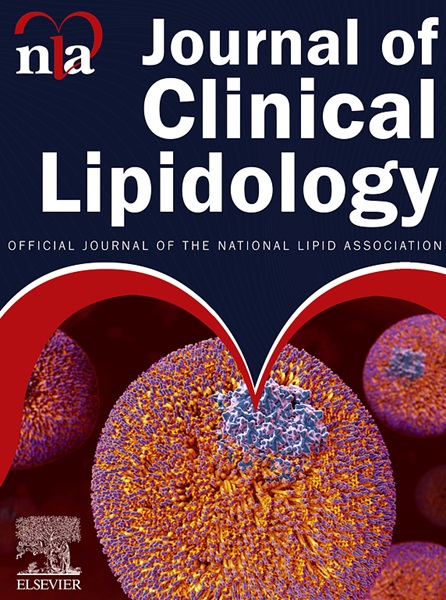Safety and effectiveness of evinacumab in an infant with homozygous familial hypercholesterolemia: A new renaissance for the very young?
IF 4.6
3区 医学
Q2 PHARMACOLOGY & PHARMACY
引用次数: 0
Abstract
The rare homozygous form of familial hypercholesterolemia (HoFH) is characterized by extremely high low-density lipoprotein (LDL) cholesterol levels, typically exceeding 13 mmol/L (500 mg/dL), and a variable phenotype that may include marked premature atherosclerotic cardiovascular disease. HoFH with null-null LDL receptor mutations can be highly resistant to standard pharmacological therapies. The standard of care treatment option is lipoprotein apheresis (LA). However, LA is not commonly available, is technically demanding, and is relatively invasive and arduous for very young patients. Here we report effective lowering of the LDL cholesterol in a 13-month-old child with HoFH treated with evinacumab, initially at a low dose (7.5 mg/kg), later increased to 15 mg/kg/28 days. The decision was made after the failure of standard drug therapies in a sibling with the same null-null mutation in the LDL receptor, submitted to liver transplantation, who had severe complications. The treatment with evinacumab was safe and effective; LDL cholesterol, triglycerides, and apolipoprotein B concentrations all decreased by over 80%. Our findings suggest that evinacumab is a safe and effective option for treating very young patients with HoFH who do not respond to conventional therapies.
evinacumab在纯合子家族性高胆固醇血症婴儿中的安全性和有效性:非常年轻的新复兴?
家族性高胆固醇血症(HoFH)是一种罕见的纯合子形式,其特征是低密度脂蛋白(LDL)胆固醇水平极高,通常超过13 mmol/L (500 mg/dL),并且表型可变,可能包括明显的过早动脉粥样硬化性心血管疾病。具有零LDL受体突变的HoFH对标准药物治疗具有高度抗性。标准的护理治疗选择是脂蛋白分离(LA)。然而,LA并不常见,技术要求高,对于非常年轻的患者来说,相对具有侵入性和艰辛。在这里,我们报告了evinacumab治疗的13个月大的HoFH患儿ldl胆固醇的有效降低,最初是低剂量(7.5 mg/kg),后来增加到15 mg/kg/28天。这一决定是在标准药物治疗失败后做出的,他的一个兄弟姐妹在低密度脂蛋白受体上有相同的零突变,接受肝移植,并有严重的并发症。evinacumab治疗安全有效;低密度脂蛋白胆固醇、甘油三酯和载脂蛋白B浓度都下降了80%以上。我们的研究结果表明,evinacumab是一种安全有效的选择,用于治疗非常年轻的HoFH患者,这些患者对传统疗法没有反应。
本文章由计算机程序翻译,如有差异,请以英文原文为准。
求助全文
约1分钟内获得全文
求助全文
来源期刊
CiteScore
7.00
自引率
6.80%
发文量
209
审稿时长
49 days
期刊介绍:
Because the scope of clinical lipidology is broad, the topics addressed by the Journal are equally diverse. Typical articles explore lipidology as it is practiced in the treatment setting, recent developments in pharmacological research, reports of treatment and trials, case studies, the impact of lifestyle modification, and similar academic material of interest to the practitioner.
Sections of Journal of clinical lipidology will address pioneering studies and the clinicians who conduct them, case studies, ethical standards and conduct, professional guidance such as ATP and NCEP, editorial commentary, letters from readers, National Lipid Association (NLA) news and upcoming event information, as well as abstracts from the NLA annual scientific sessions and the scientific forums held by its chapters, when appropriate.

 求助内容:
求助内容: 应助结果提醒方式:
应助结果提醒方式:


